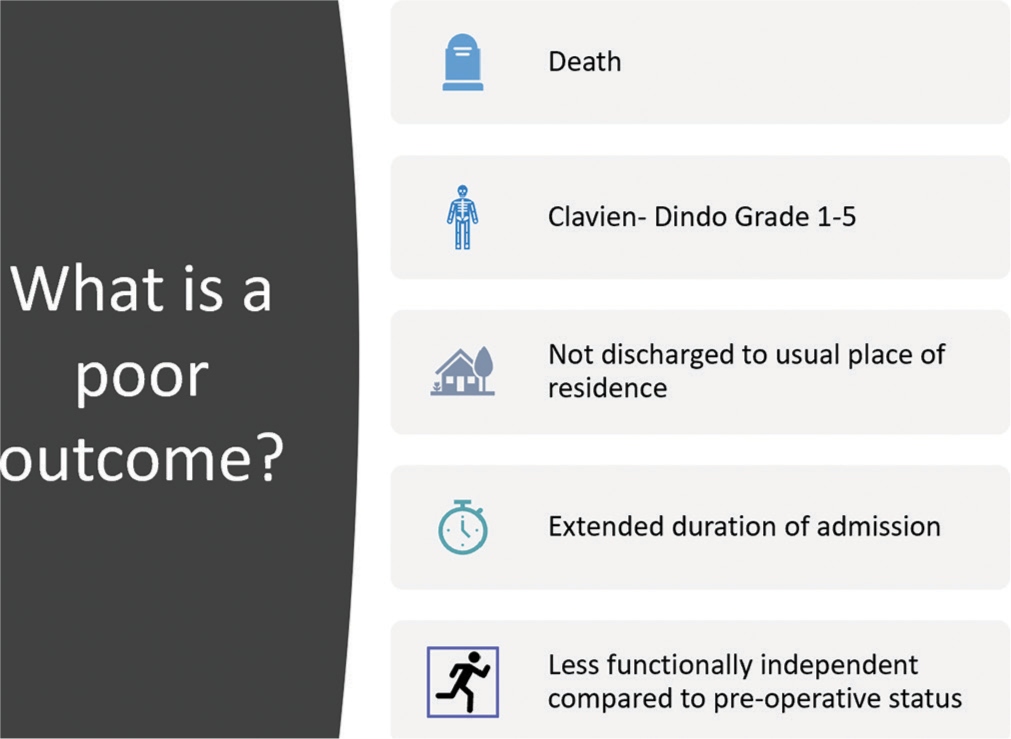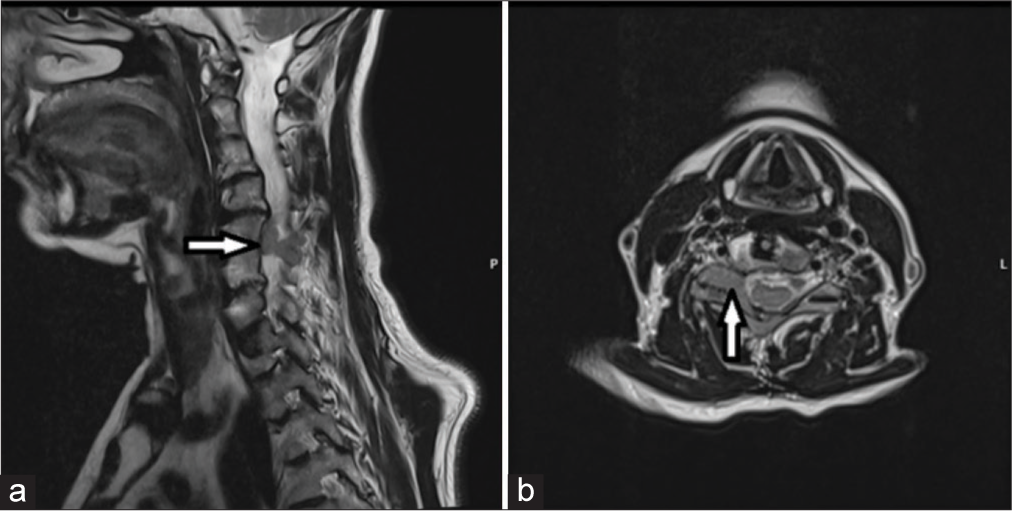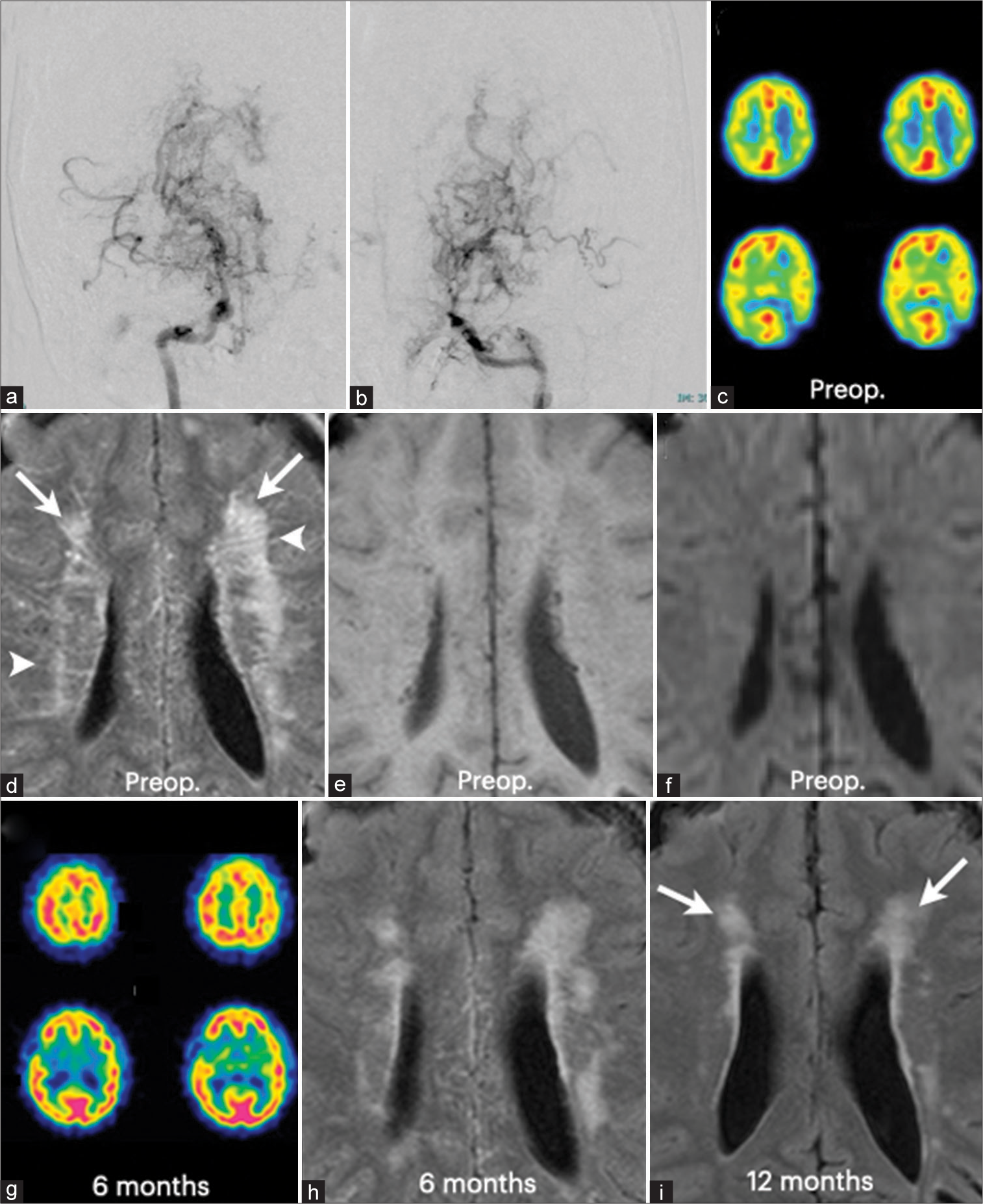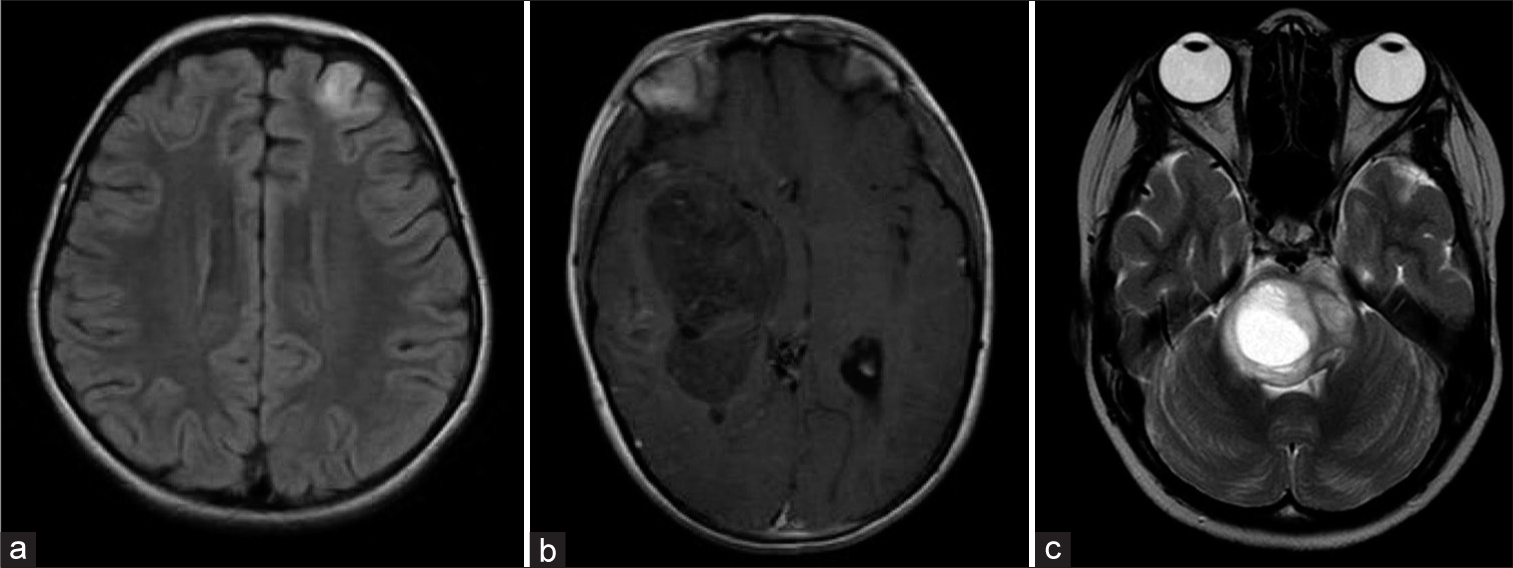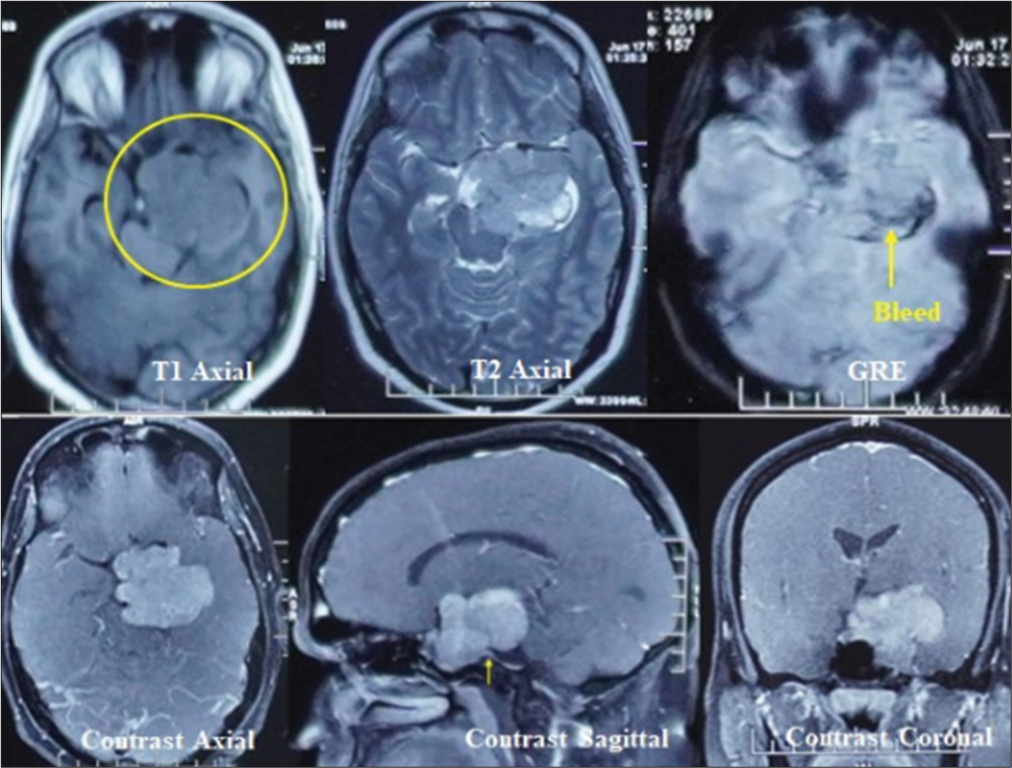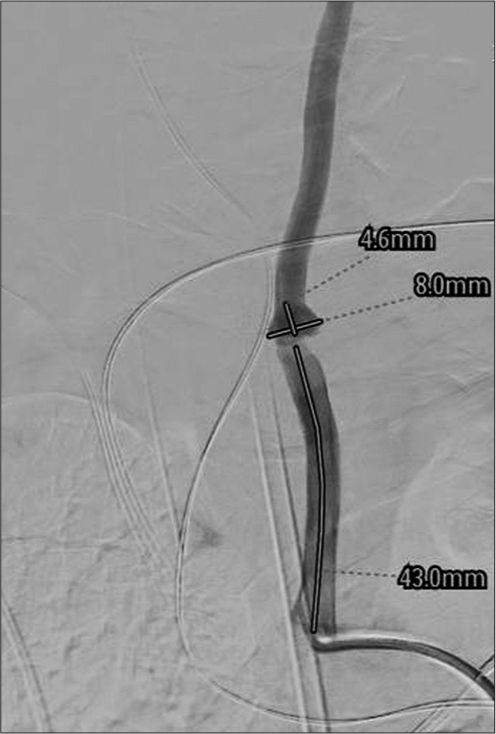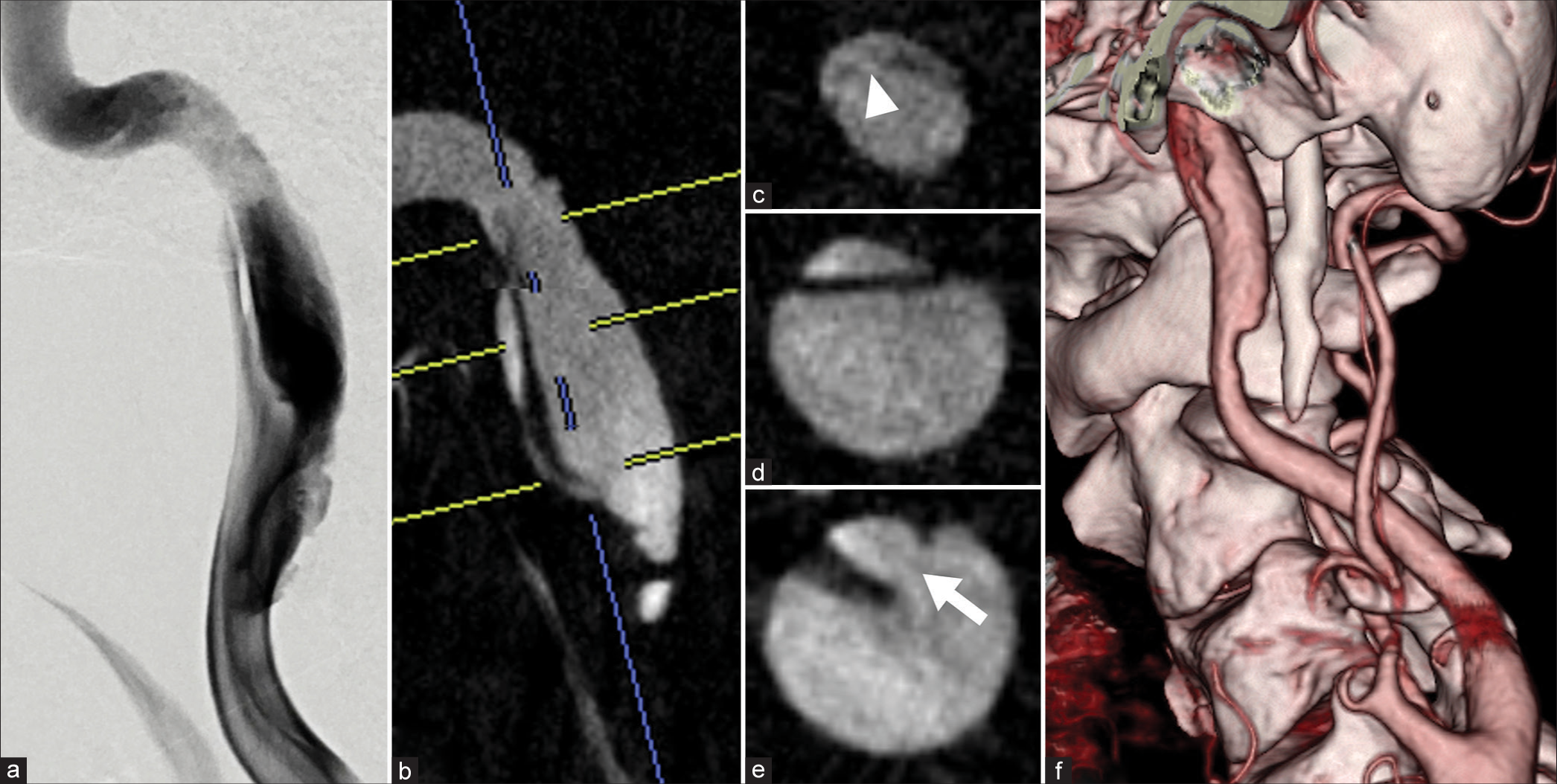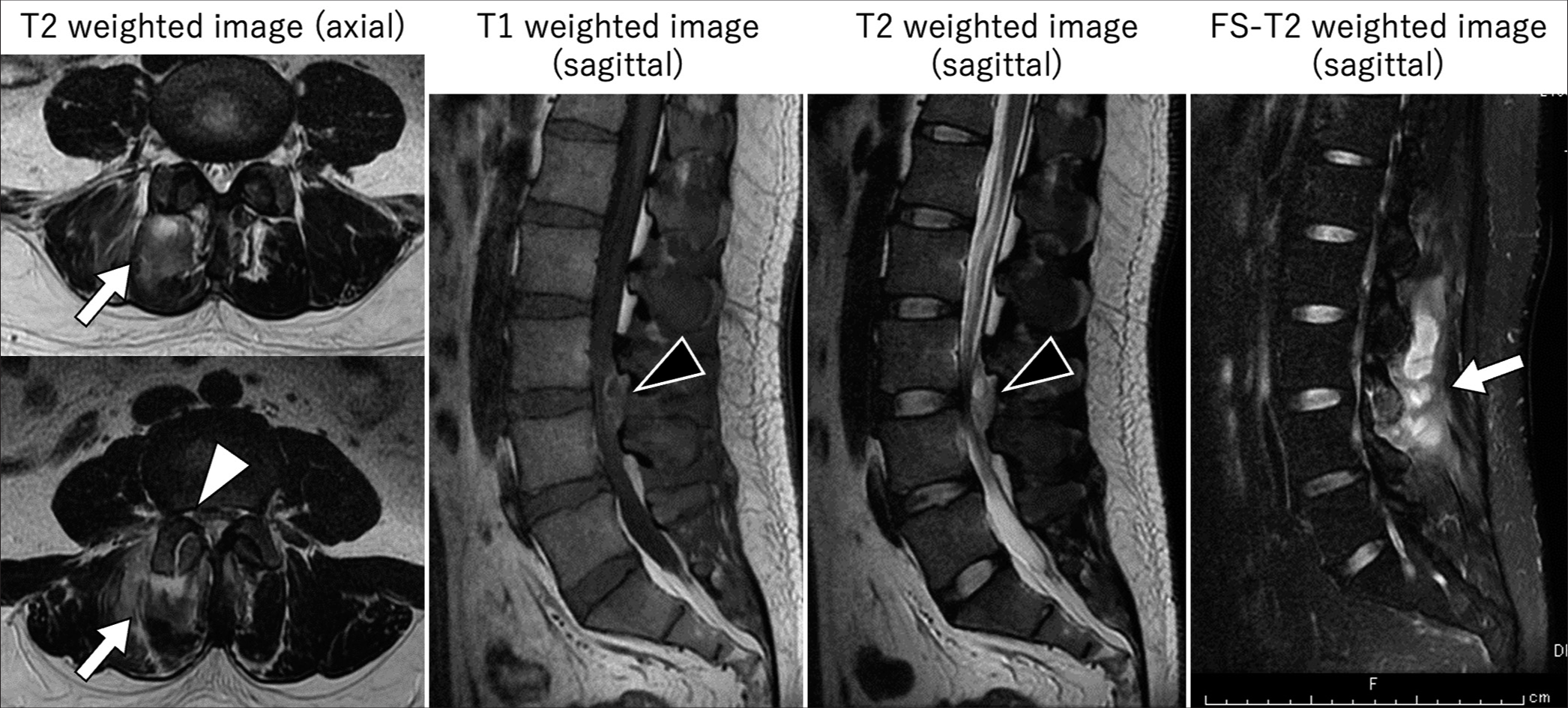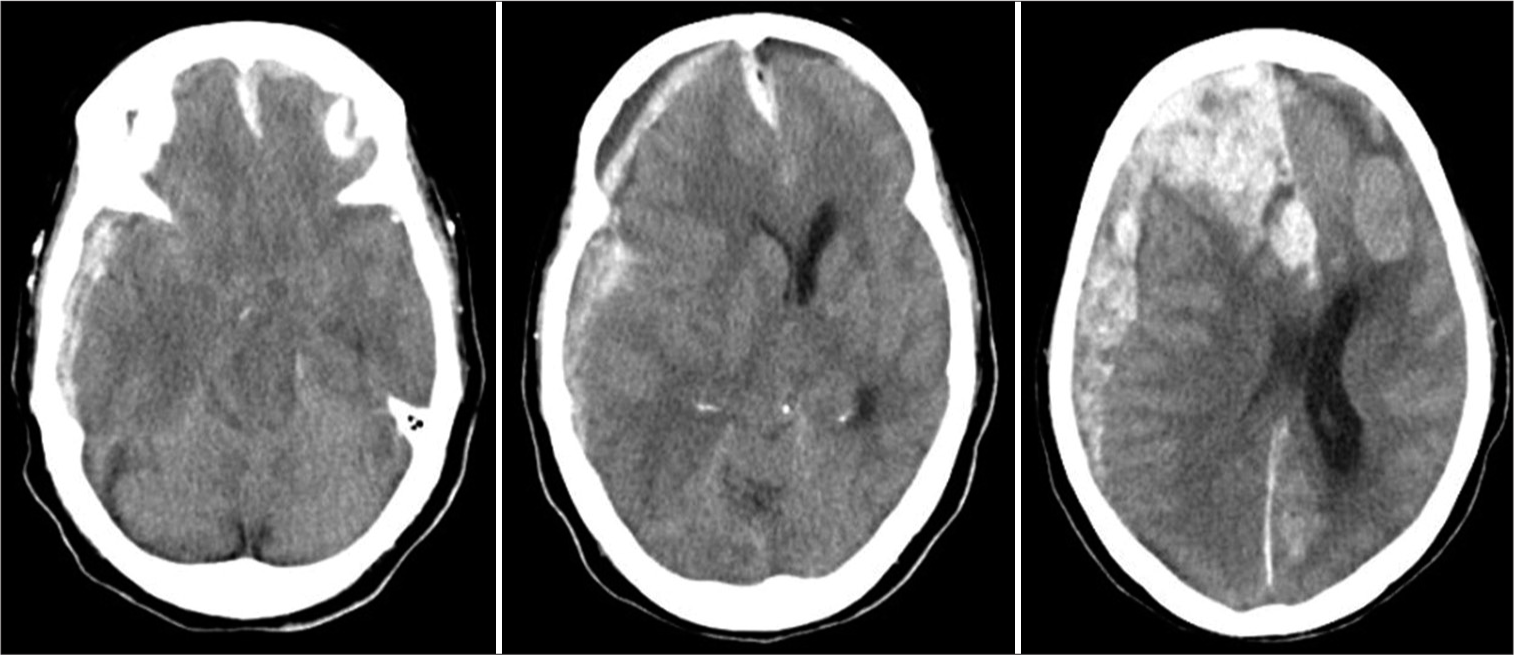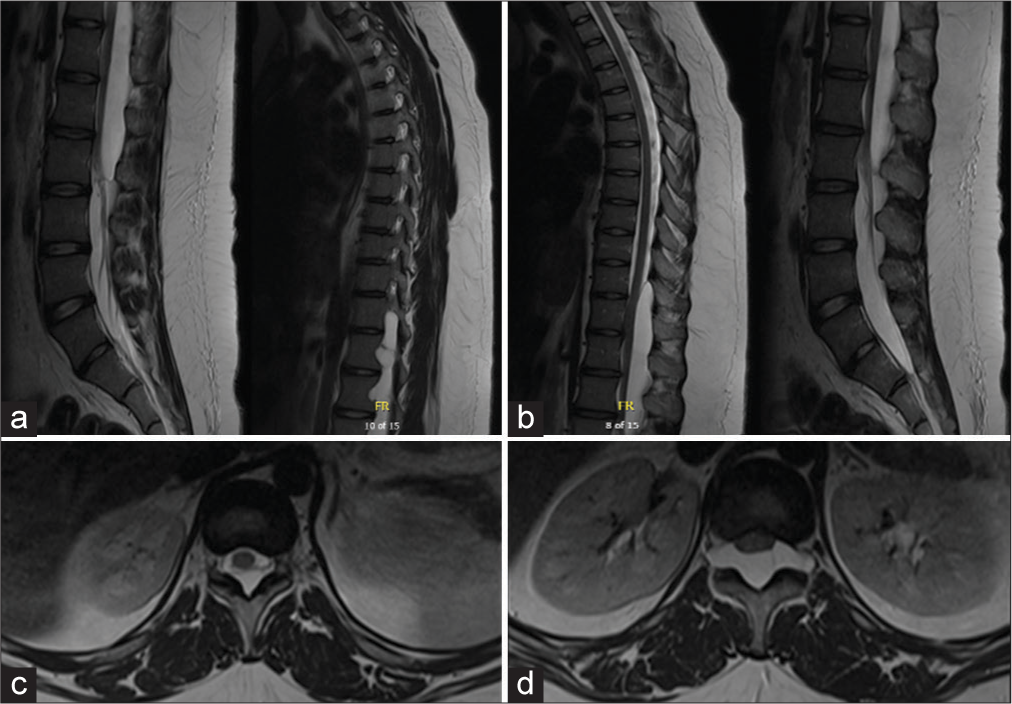Do we need a neurosurgical frailty index?
Date of publication: 19-Apr-2024
Background: An increasing number of elderly patients now require neurosurgical intervention, and it is sometimes unclear if the benefits of surgery outweigh the risks, especially considering the confounding factor of numerous comorbidities and often poor functional states. Historically, many patients were denied surgery on the basis of age alone. This paper examines the current selection criteria being used to determine which patients get offered neurosurgical management and attempts to show if these patients have a good outcome. Particular focus is given to the increasing insight into the need to develop a neurosurgical frailty index.
A rare presentation of leiomyosarcoma metastasis to the cervical spine: A case report and a brief review
Date of publication: 12-Apr-2024
Background: Leiomyosarcoma (LMS) is a rare malignancy that originates from smooth muscle. The most common sites of metastases include the lungs, liver, kidney, and skin. Notably, metastases of LMS to the central nervous system/or spine are extremely rare. When a cervical spinal LMS lesion was encountered, the patient successfully underwent gross total tumor resection with negative margins.
Resolution of white matter hyperintensity after surgical revascularization in moyamoya disease – A report of three cases
Date of publication: 12-Apr-2024
Background: Moyamoya disease often presents white matter hyperintensity (WMH) lesions on fluid-attenuated inversion recovery (FLAIR) images, which is generally accepted as irreversible. We, herein, describe three cases of moyamoya disease with WMH lesions that regressed or disappeared after surgical revascularization.
New CNS tumor classification: The importance in pediatric neurosurgical practice
Date of publication: 12-Apr-2024
Background: The management of the central nervous system (CNS) tumors in the pediatric population is crucial in neurosurgical practice. The World Health Organization (WHO) has evolved its classification of CNS tumors from the 19th century to the 5th edition, published in 2021, incorporating molecular advancements. This transition from morphology to molecular characterization is ongoing.
Medically responsive amyloidogenic giant sellar-parasellar prolactinoma
Date of publication: 12-Apr-2024
Background: Giant prolactinomas are rare; among them, the amyloidogenic variant, prolactinomas with extensive spherical amyloid deposits, are rare, with only 30 cases reported with recommendations of surgical management contrary to the routine prolactinoma’s medical management.
Thrombectomy and stenting of pseudoaneurysm from transcarotid artery revascularization
Date of publication: 12-Apr-2024
Background: Transcarotid artery revascularization (TCAR) is becoming an increasingly popular treatment of carotid stenosis. Despite this rapid adoption, little in the literature describes the associated complications of this procedure.
Extracranial internal carotid artery-dissecting aneurysm having a re-entry tear and causing lower cranial nerve palsies treated with flow-diverting stent: A case report
Date of publication: 12-Apr-2024
Background: Extracranial internal carotid artery (ICA)-dissecting aneurysms (DAs) rarely cause re-entry tears and lower cranial nerve palsies. The therapeutic strategies for these pathologies are not well established. This report presents a case of an extracranial ICA -DA with a re-entry tear that caused lower cranial nerve palsy.
Psoriasis vulgaris of the skin caused a L3-L4 lumbar epidural spinal abscess
Date of publication: 12-Apr-2024
Background: In a 31-year-old male, psoriasis vulgaris (PV) of the skin caused paraparesis attributed to a L3-L4 epidural spinal abscess that required emergent surgical decompression.
Fatal convexity and interhemispheric acute subdural hematoma from a falx meningioma: A case report
Date of publication: 05-Apr-2024
Background: Hemorrhagic meningiomas are rare. We report a rare case of nontraumatic convexity and interhemispheric acute subdural hematoma (ASDH) caused by a falx meningioma.
Extradural spinal cyst in a pediatric patient: A case report
Date of publication: 05-Apr-2024
Background: Spinal extradural arachnoid cysts comprise <1% of all spinal lesions and are rare findings in pediatric patients. The pathogenesis of spinal extradural arachnoid cysts is not well known but is thought to most commonly be due to congenital dural defects. Other origins include trauma, inflammation, or infection, such as arachnoiditis. Spinal magnetic resonance imaging is the gold standard for diagnosis, showing a fluid-filled space dorsal to the spinal cord with signal intensity akin to cerebrospinal fluid (CSF) and often the site of dural defect with CSF leak. While most spinal extradural arachnoid cysts are asymptomatic, large cysts can compress the spinal cord or nerve roots, leading to myelopathy, radiculopathy, or focal pain symptoms. In such cases, surgical management is indicated.


